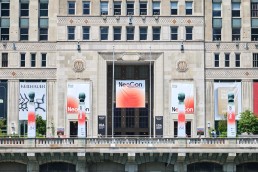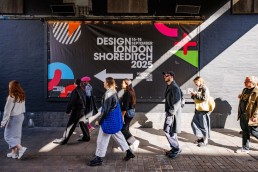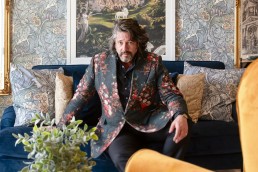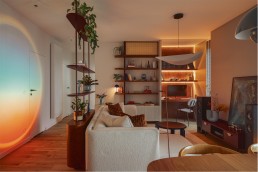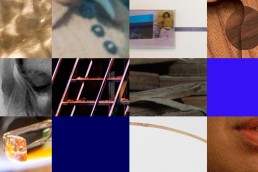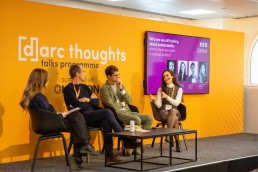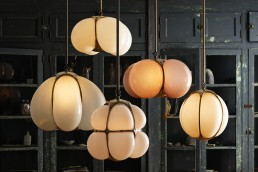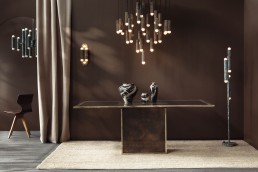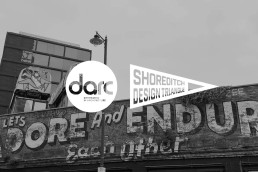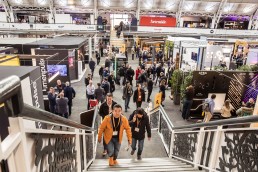NeoCon to launch premier lighting exhibit
(USA) - NeoCon, the largest and longest-running show serving the commercial interiors (A&D) industry, has announced the launch of Illuminate at NeoCon 2026, a new show-within-a-show concept dedicated to architectural, technical, and decorative lighting.
Scheduled to debut on 8-10 June at The Mart in Chicago, Illuminate will take place on the 7th floor of the exhibit hall as part of the redesign section. The platform aims to foster deeper connections between lighting manufacturers and professionals and the design community, offering direct access to the brands and technologies
As part of a redesign of the 7th Floor Exhibit Hall, Illuminate will serve as a showcase for education and exploration, featuring a selection of premiere and emerging lighting brands in unique booth configurations. Visitors will experience interactive vignettes and immersive installations that demonstrate the dramatic effects of lighting design in real-world scenarios.
Educational programming led by lighting experts will offer insights into the latest trends, technologies, and applications, while special events, happy hours, and meet-and-greets will offer collaboration and networking opportunities.
Lisa Simonian, Vice President, Head of Trade Shows at The Mart, comments: “With Illuminate, our goal is to create a dynamic new hub connecting the lighting industry with the commercial design community and NeoCon’s audience of more than 50,000 architects, designers and end-user decision makers. We are responding to an important need for lighting to be more properly recognised as a key and essential component of good design.”
LDF: product highlights from the Shoreditch Design Triangle
Discover the latest innovations, products and installations we uncovered during the darc Lighting Tour, in partnership with Design London Shoreditch at London Design Festival.
As summer fades into memory, the design world is only just hitting its stride. For us at darc, the London Design Festival marks the true beginning of the season – a moment that not only re-energises the industry after its quieter months but also sets the tone for what lies ahead. This year, the festival saw the debut of Design London Shoreditch, a fresh addition to the festival and one we were excited to collaborate on. Brought to life by the organisers of Clerkenwell Design Week, the event popped up across East London’s thriving design district with a series of tightly curated exhibitions.
As part fo the launch, darc partnered with Design London Shoreditch to host a dedicated lighting tour, guiding attendees through standout showrooms and brands while highlighting the latest products and projects that showcase the ever-evolving role of light in design. As Media 10’s Marlon Cere-Marle, and leader of the tour, explained:
"The idea behind the lighting tour was to give lighting designers and specifiers the chance to experience key installations and product launches first-hand, while hearing directly from the creatives shaping the industry. It was extremely well received, with visitors valuing the opportunity to ask questions and connect directly with brands and designers. The launch of Design London Shoreditch has further strengthened Shoreditch Design Triangle as the largest district and a key destination during London Design Festival, drawing an even broader trade audience to the area. Collaborations like this with darc are central to that success, and we were delighted to partner with them to bring the tour to life."
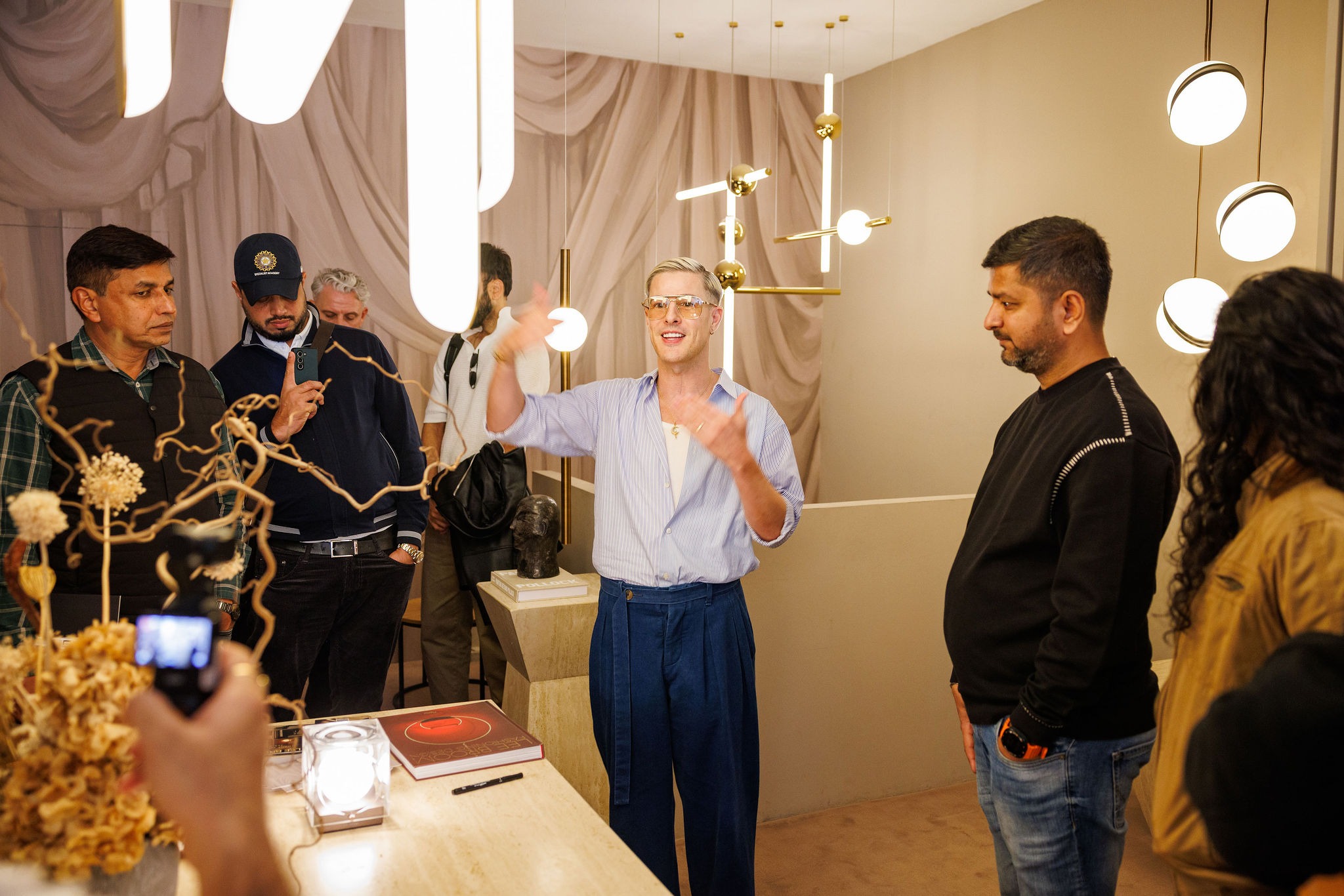
The tour began at Lee Broom’s flagship showroom, where the designer welcomed us with his trademark flair – coffee, pastries, and a display as immaculate as ever. But the real spectacle was the work. Broom’s collaboration with Lladró, Cascade, was a highlight: porcelain lanterns reimagined as glowing, modular installations, which made its debut in Milan earlier this year (read more here). His new Chant Portable Lamp was another standout – sleek, sculptural, and refreshingly functional. With a 40-hour battery life and a festival launch price of £225, it was one of those rare pieces that balances collectability with accessibility.
At Tala, the experience took a different turn. Instead of unveiling a product outright, visitors were confronted with a question: What do you usually do before going to sleep? Unsurprisingly, most admitted to scrolling on their phones. The point was clear – and so was the solution. Tala, in collaboration with Heatherwick Studio, introduced Wake, a bedside lamp designed to replace our phones as a sleep companion.
Presented in the immersive Sunset Room, Wake felt more like an experience than a product launch. The installation washed the space in warm, meditative light while a film narrated its three-year journey from idea to object. The lamp itself, made from ceramic and glass, blends craft with technology through subtle, programmable sequences of light and sound. Unlike the clunky “sleep gadgets” already on the market, Wake feels like something you’d want in your home. Elegant, tactile, and purposeful – a rare combination. (Read more about Wake in Issue #61).
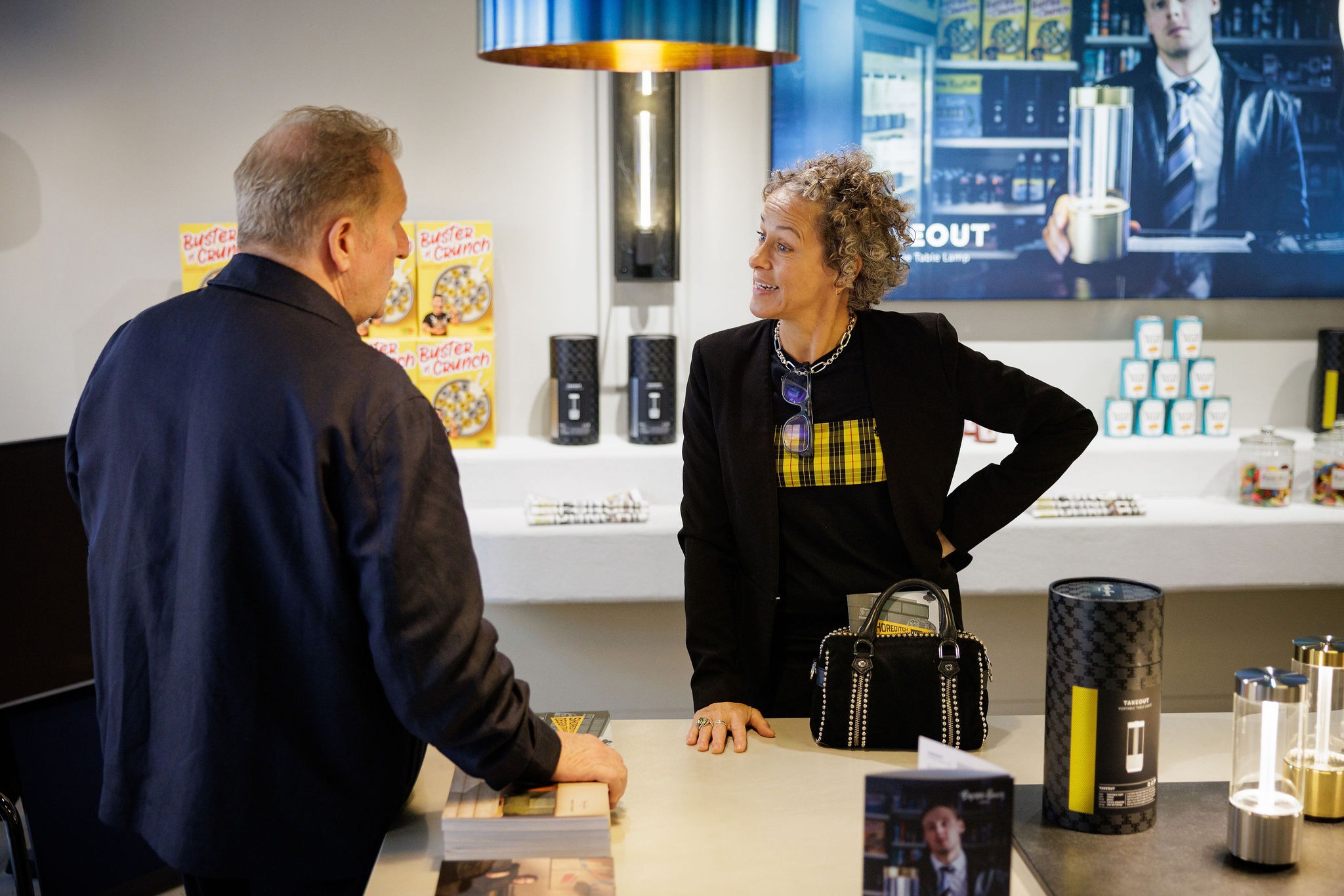
Just across the road, we visited the Buster + Punch flagship, where founder Massimo Buster Minale unveiled Takeout – a portable table lamp in solid metal, featuring the brand’s signature cross-knurl detailing. Its distinctive light pipe and canopy sit beneath a toughened glass shade, dimmable by touch. Though still in development, the tour had the rare opportunity to handle the prototype firsthand. True to Buster + Punch’s flair for storytelling, the launch is accompanied by a bold creative campaign, which we also previewed. Unlike the brand’s predominantly made-to-order catalogue, Takeout is designed as a grab-and-go item, ready to purchase and take home immediately. To match the lamp’s concept, the flagship itself had been transformed into a quirky convenience store – echoing the promotional video – complete with playful touches such as Buster + Crunch cereal boxes.
At the Wax Building, home to brands like Cozmo, MinimalLux, and Tamart, the standout was undeniably Lightmass^ by Raw Edges. The lower-floor installation featured sculptural, feather-light lighting pieces that integrate LED sources directly into their mesh structures, blurring the line between form and function. Pendants, floor, and table lamps are crafted from a single material, reducing waste while remaining adaptable to a variety of spaces. The collection’s focus on sustainability and its ability to turn light into a tangible spatial experience underscore Raw Edges’ vision of lighting not just as illumination, but as a key architectural element.
After stops at architectural lighting brands Light Lab and XAL, the tour arrived at the final destination: House of Icons, housed in Shoreditch Town Hall and the beating heart of Design London Shoreditch. The space offered a curated mix of exhibitions, talks, and installations, showcasing both emerging and established lighting brands.
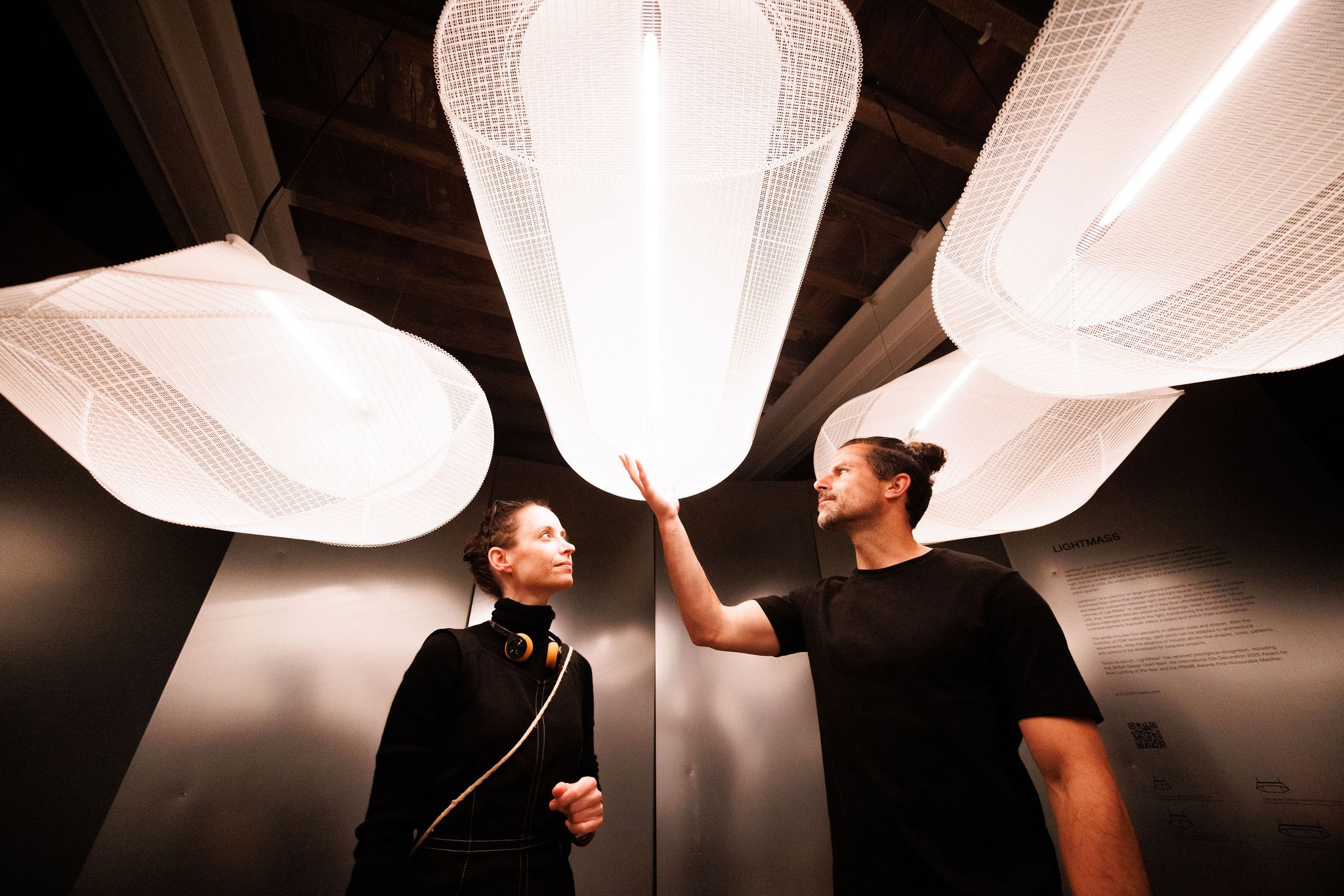
In terms of exhibitors, two highlights stood out. Dutch company Georgious presented its Slide Light, a tubular floor lamp with adjustable height and light output. Smart sensors activate only the exposed LEDs, allowing the piece to subtly transform a room’s ambience. Meanwhile, Italian family-owned Masiero’s Dimore lighting impressed with its luxurious contemporary collection for private interiors. By blending sophisticated aesthetics with emotional nods to tradition, the brand delivers lighting that is both artistic and functional.
From Lee Broom’s sculptural innovations to Tala and Heatherwick Studio’s immersive experiments, and the playful ingenuity of Buster + Punch to Raw Edges’ sustainable designs, the festival felt alive with ideas that push lighting beyond utility into art and experience. Design London Shoreditch proved itself a worthy addition to the festival, offering a stage for daring design and thoughtful craftsmanship.
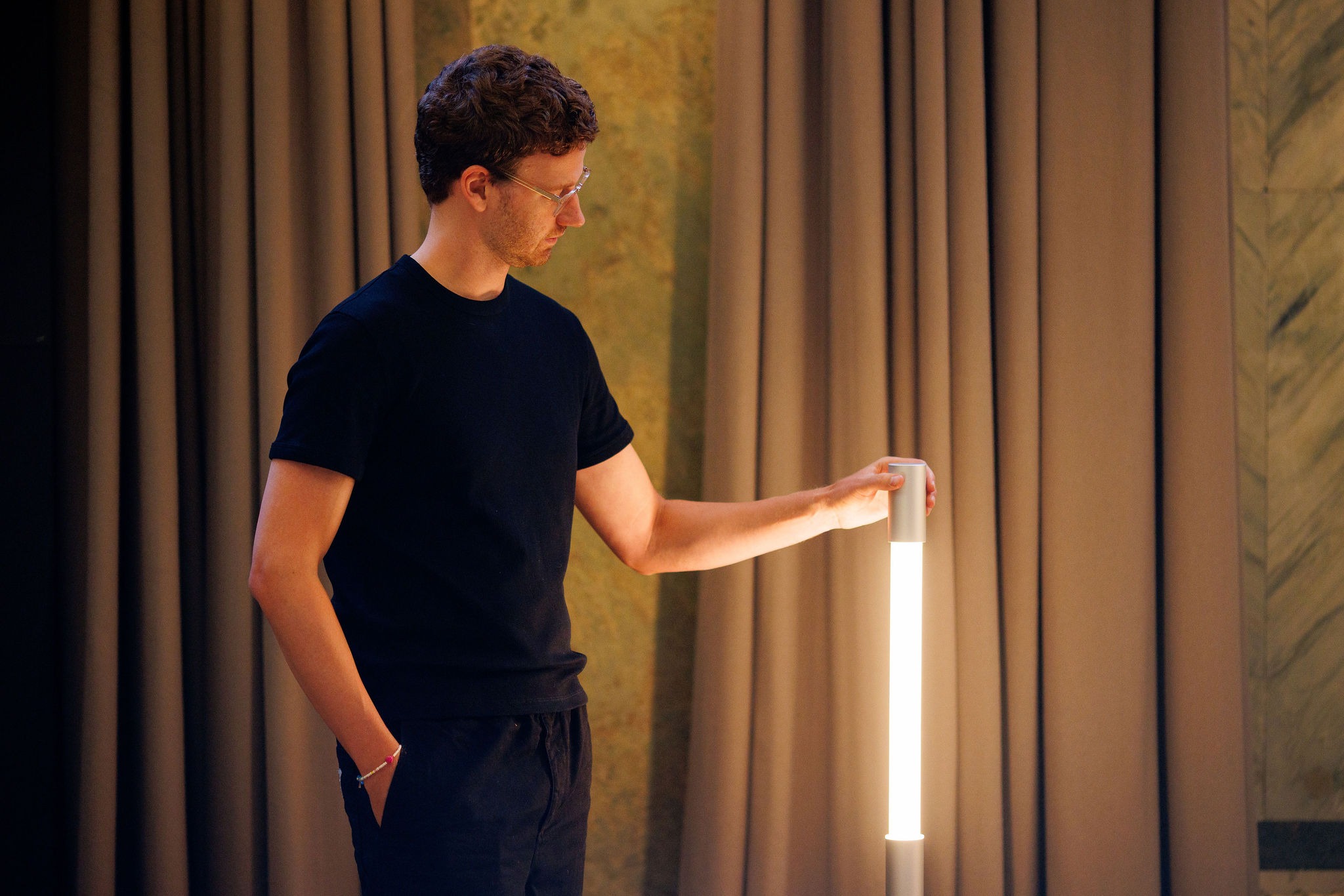
www.designlondonshoreditch.com
Laurence Llewelyn-Bowen
British TV presenter and interior designer Laurence Llewelyn-Bowen talks with darc about his new venture as Design Curator for Rangeford Villages retirement accommodation, as well as his approach to lighting design within residential projects.
Laurence Llewlyn-Bowen is an internationally acclaimed interior designer and television presenter, who is well-recognised for his beautifully outlandish wardrobe of patterned blazers and British rom-com-esque mop of dark hair. In the 1990s and Noughties, his design expertise played a large role in creating a movement in British interior design that encouraged personal expression and confidence in exploring colour and pattern in an era that had a tendency to lean into neutral chromes and greys.
Llewelyn-Bowen has graced the British TV screens since the mid-1990s, featuring on iconic interior design shows, including Changing Rooms, which became a staple household viewing.
Nowadays, Llewelyn-Bowen splits his time between escaping the claws of Bear Grylls’ treacherous Bear Pit (“Celebrity Bear Hunt”, Netflix 2025) and designing a new generation of retirement living accommodation.
darc’s editor, Sarah Cullen, had the unique opportunity to sit down with the designer to discuss his relationship to lighting as well as one of his most recent projects for Rangeford Villages and the role that lighting plays in creating a safe and comfortable space for our older populations. In July last year, Llewelyn-Bowen opened his first Rangeford design offering in its stunning Siddington Park residence in Cirencester, Gloucestershire.
As the appointed Design Curator, Llewelyn-Bowen brings his creativity, maximalist approach and fresh style to Rangeford’s developments, offering a sophisticated touch to the brand’s luxurious living spaces in their first collaboration. His passion for design innovation aligns with Rangeford’s vision to redefine retirement living and a mutual aim of setting a new standard for luxury and design in the retirement sector. Throughout the residential spaces, the majority of fabrics, upholstery, furniture, artworks and accessories are handpicked and sourced from the Llewelyn-Bowen’s brand and patents. “As you get older, you must not stop being brave, you must not compromise, and you must not assume, ‘I’m old now, so I’d better turn down the volume’,” he explains.
Llewelyn-Bowen’s initial interest in retirement living began when the Siddington complex was being built on the edge of his village, Siddington. “Working on a retirenment accommodation project is not something I sought out to do. I was intrigued by it and really went in to play devil’s advocate more than anything. Here I am, a 60-year-old squire of Siddington,I’m not going to be forced into some sort of beige/oatmeal trailer park. I saw the Sex Pistols live! I want to go down fighting, with the ship!” And from those initial discussions with the Rangeford team, it was apparent to Llewelyn-Bowen that wasn’t the case for these later-in-life residences. Instead, Rangeford drew design inspiration from boutique hotels, which was what appealed most to Llewelyn-Bowen. “I said to the Rangeford team I wouldn’t be their poster boy; I’m not going to be involved in this unless I’ve got skin in the game. I want to be part of the design process. If they want my name, the cost is that they have to trust me as a designer. I think this is why the project became so big, because there’s a natural affinity there that you can’t license, you can’t franchise, you can’t manufacture.”
CEO of Rangeford Villages, Howard Nankivell, adds: “Laurence is the undisputed king of wild, spectacular and adventurous design. At Rangeford, we strive to really raise the bar for retirement living, creating thriving new communities that promote healthy, active lifestyles, hobbies, friendships, and wellbeing, so we are absolutely delighted with this partnership.”
As the Creative Curator for Blackpool Illuminations for 15 years, Llewelyn-Bowen knows a thing or two about fun lighting. But when it comes to considering its role in a residential setting, and especially for those who may be hard of seeing, it was important to address suitable illumination considerations for Siddington Park.
“I still think people are not properly, thoroughly, and creatively getting to grips with the absolute basics of lighting a room, which is that it’s a very simple thing. It was drummed into me in the 1980s; lighting should be in at least three, if not four, corners. Direct overhead lighting is something that will never be flattering to the room and deeply unflattering to anyone who occupies it as well. Try and create an environment where you are using as many points of light in as many different ways as possible.”
Looking more closely at the Siddington Park project, Llewelyn-Bowen explains that they completed all of the lighting schemes in-house. “I didn’t want the scheme to become too contrived because ultimately, these residents need to be able to live there.
“We’ve got a number of projects at the moment where we are working with a variety of lighting companies, which are all lovely and marvellous. In contract setting, lighting for shops and restaurants etc. you can use as many solutions as you need. In the B2B market, you’re dealing with professionals. But I think, when you are creating spaces for people to live in, presupposing that they’re going to have a cupboard with eight or nine different shelves, each of which is labelled with a specific light source in various colour temperatures, is something that’s never going to work.
“So, one of the things I’ve seen is that people are getting more and more interested in anti-tech interiors. Six, seven, eight years ago, interiors were very much about slinky lighting solutions that were hidden in troughs with tech that meant you could click your fingers and it all changed colour. All of these are becoming less interesting to people. They’re wanting an end result now. An indicator of this is the way that the television has now become something that is incredibly discreet in most people’s lives. It is disguised as a picture or a mirror or just left as a television, but it’s not dominating the room in the way that it did in the 1990s.
“So, I think that it’s about trying to achieve schemes that feel organically unlit in many ways and feel as if they are creating an ambience and an atmosphere, predominantly, rather than showing off that we are using lighting in a clever way.”
To achieve these lighting levels, Llewelyn-Bowen references the use of low-level light fixtures, such as table and floor lamps, as a key. Particularly for the Rangeford retirement projects, he was keen to interject a 1970s vibe through the low-level lighting; something he feels his generation will be able to connect with through a sense of nostalgia and familiarity. One way he has incorporated this is through the use of table lamps within cabinetry and display shelves as opposed to track or linear LED lighting. The act of switching a lamp on manually rather than through a connected automation system is something he believes the residents will appreciate more in a world that is taking a step back from technology. “I think people want design to stop being so technocentric and desire interiors that feel less like Big Brother, less digital,” he explains. “Particularly, a lot of our younger clients feel a lot of the big, showy tech that occurred in the 20th century has led to a lot of environmental issues that we witness today. When you look at the classic Noughties, spaces were enormous and minimalist with great big windows with concealed lighting. These spaces are incredibly heavy on resources, whether that’s heating or cooling. All of that glass is allowing for the energy that’s being expended on behalf of that room to escape. It makes you feel embarrassed for it. They’re terribly wasteful spaces.
“Look back at the Renaissance era when the super wealthy would express their wealth through ornamentation, decoration, gold leaf, and classical statues. Nowadays, people express their wealth solely by how much empty space they have.
“For a lot of people, it feels politically, socially, ecologically, and spiritually wrong to own a lot of space that you’re doing nothing with other than spending planetary resources making it comfortable for you on your own.”
Turning the conversation to the topic of natural daylight at the Rangeford’s retirement villages, Llewelyn-Bowen explains that a main ethos is very much about outdoor spaces. “Every apartment has incredible access to visual space, so you don’t get that feeling of cheek-by-jowl. Outdoor spaces are a very important part of the sociability of the Rangeford lifestyle. And this is all linked with the idea of preserving lifespan by creating interest, diversion, and excitement, while also creating easy-going access to outdoor spaces.
“One thing I can’t bear is over-lighting exterior spaces. You can end up with these golf course-type spaces with different coloured lights springing up through conifers, randomly dotted around. Instead, I like light sources to be visible in outdoor spaces, and to treat these areas in the same way I would an indoor space, with occasional table lamps and chandeliers hanging from trees.”
Another key ethos for the residential brand is one that isn’t about downsizing, but instead about rightsizing. It’s about providing a stimulating environment in which you can continue to be yourself, while minimising the physical frictions that come with ageing, for example, difficulties in climbing stairs.
It removes any worries or concerns about the upkeep of old English houses and instead puts the focus back into a community that you can choose to opt in or out of. “It’s about harnessing design, treating it seriously and using it as an important part of making people feel that they are still valued. They’re allowed to be surrounded by things that interests them rather than the traditional attitudes, which see the dial turned right down and next thing you’re shuffling along a beige corridor in your carpet slippers, passing pictures that were in shades of euphemism. This sense of literally sucking the life out of an interior, and in turn sucking the life out of the inhabitants of that interior.
“Our work is about doing the absolute reverse; this is about breathing fire, life, chilli, excitement and rock and roll into areas that are occupied by people that are all about that.”
When asked whether imposing such a strong sense of design, colour and pattern into a space that needs to cater for all tastes, Llewelyn explains how it is important not to like some things. “It’s always going to be marmite, isn’t it? It’s all about the fact that if you had absolutely everything in an interior, the right shade of pink, that shade of pink would be devalued. You need to have dissonance. You need to have some spice in there that makes if feel slightly different.”
Some of the ways in which this spice and flair were incorporated into the residences were through the decorative lighting fixtures. The Llewelyn-Bowen brand has thousands of patterns, colours and paintings created by the man himself. In addition to the specification of his in-house fixtures, Llewelyn-Bowen also worked closely with Soho Lighting and Pooky to interject added colour and points of interest. “We use Soho Lighting a lot, which I think is wonderful. I think there’s a real swing back to being physically engaged with technology. The idea of the Siri control and the Lutron controls etc. are less favourable. There’s something really nice about a light switch, and when it’s being configured to work and feel perfect - it’s something Soho do so well. Also, I think for too long in Britain we’ve been settling for these clumpy bits of white plastic on the wall. Something like a light switch is an incredibly important part of that wall; it’s part of the pictures that you see, it’s part of the vase that you might be displaying on a table. So we’re building Soho Lighting into our schemes more and more.
“I’ve also had a really strong affinity to Pooky Lighting. I think they’re arty, crafty, 1960s/70s aesthetic chimes very well with what we’re doing in terms of pattern and colour. One of the best ways of making a real difference to the way that a space feels when it’s lit is putting a pattern on lampshades. And I think particularly when you are dealing with the LED lights nowadays, they do have a very flat light because they’re so diffused. A pattern shade, which is about light and colour, is a bit of a stained-glass window that brings some of the romance, some of the mystery back to lighting that was lost with the change to LED. Also, doing things like using foil inside a lampshade also makes a big difference. And, controlling light through lampshades, which literally block the light, so it’s like
a hand in front of the light, making it move off to the sides. All of these things are part of the sculpture of light play that you can be quite theatrical with. And I think this is something that the Rangeford buyers are really responding to; the fact that they’ve got this very high-end, boutique, bougie idea of lighting in the apartments, which is not what you’d typically find in a retirement context. That would usually be a lot of light. There are times when we do need this - such as when picking out the perfect plush velvet tie to go with our flares - but most of the time we don’t. We want to be in a gentle, sultry, sexy environment.
“As you get older, you must not stop being brave, you must not compromise, and you must not think, I’m old now, so I’d better turn down the volume. Rangeford has proven it’s about keeping the volume up, keeping up the rock ‘n’ roll, and keeping the excitement. Design is there to help, it is there to make you feel a lot better about who you are, where you are and how you live - this collaboration is the perfect example of that.”
Private Residence
In Bydgoszcz, Poland, a riverside apartment becomes a sanctuary where the spirit of flight meets the comforts of home. Inspired by their clients’ love of gliding, designers Jakub Żurawicki and Joanna Kubiak shaped an airy, light-filled space that balances work, rest, and passion in perfect harmony.
In the heart of Bydgoszcz, Poland, an apartment perched on the Brda River became the home of two young professionals. Active enthusiasts of travelling, gliding and the great outdoors, the pair bought the designed apartment to gain more than just a place to call home but a sanctuary to pause, recharge, and find the balance between constant movement, work life, rest and rejuvenation.
Interior designers Jakub Źurawicki and Joanna Kubiak were tasked with tailoring the apartment to every facet of the owner’s life, from work and studying, to spending quality time with loved ones, in turn creating a multifunctional open plan living area. The pair developed a concept rooted in the client’s passion for the sky, with their main hobby being open-air gliding. Rather than resorting to literal motifs to express the concept, the designers introduced subtle gestures of lightness and flight in the form of soft cloud-like fabrics, airy blue palettes, and above all, a considered lighting scheme that ties all the elements together.
Źurawicki and Kubiak were hired through a recommendation from previous clients. The first objective was clear: to create an interior that would reflect their love for flying, while also functioning as a flexible home base. The first step of the project meant expanding the zone of the apartment to achieve an open living area. Ultimately leading to the elimination of a whole room by removing a wall to create the multifunctional space the owner’s desired. However, the space is still defined by a kitchen, a dining area, and a lounge, but is instead defined subtly through furniture arrangement, a shelving unit as a divider and zoned lighting rather than a large physical partition.
Lighting played a crucial role in defining the zones and creating balance between the narrative of sky travel and creating a calming sanctuary. Flos architectural fixtures provide a calm, neutral base of illumination, while decorative lamps bring character, colour, and references to flight. This layered approach allowed the designers to inject the poetic resemblance of the sky without overwhelming the space, adding what the designers would call “the jewels of the décor”. The collaboration with the Flos Poland team was instrumental in achieving this harmony. Their expertise ensured the architectural lighting scheme was both technically precise and discreet, allowing the decorative layer to take centre stage.
Throughout, the sky became a guiding metaphor. Wisps of clouds are suggested in the round, organic shapes of the furniture and lighting fittings, while shifting tones appear in the palette of whites, beiges, browns and blues, contrasted with bold accents of burgundy, navy and cobalt. In nine months, the pair developed an interior that feels both expansive and cocooning, providing an atmosphere that is shaped as much by light as it is by materials and form.
“In the early stages of the project, we dedicated a lot of time to carefully developing a functional layout that would fully meet the needs of the residents,” says Źurawicki. “As a result, we did not make any changes to the agreed-upon concept in the later stages of the project.”
The overall concept of the sky and lightness came to no exception when selecting the decorative lighting and was in fact a key player in defining the overarching narrative of nature. Delicate, lightweight lamps with soft or spherical shapes in white or muted blue subtly expressed the sky theme. One standout feature was the Halo Edition lamp by Mandalaki Studio, which imitated the northern lights.
To support this poetic layer, architectural lighting was kept deliberately understated. Flos fixtures provide a discreet, high-quality base of even illumination, their hidden LEDs casting soft, non-glare light. “The architectural lighting forms a neutral foundation,” adds Żurawicki. “It allowed the decorative lamps to become the real jewellery of the interior.”
Together, the two systems work in harmony: architectural lighting ensures clarity and comfort, while decorative elements create mood, mark out zones within the open-plan space, and embody the theme of flight through form and atmosphere. The result is a scheme that is at once functional and deeply expressive – translating the sky into light.
Kubiak comments: “We paid particular attention to the design of the decorative lighting. We aimed to create soft, diffused light that would enhance the atmosphere while also helping to define distinct zones within the open-plan space. The careful selection of lighting allowed us to subtly separate yet visually connect the dining, lounge, and home office areas.”
The decorative lighting elements in this project were selected with two equal priorities: technical quality and atmospheric effect. A variety of pendants, floor lamps, table lamps, and accent LED lighting were chosen based on their colour temperature, light quality, and function relative to the layout, while aligning with the overall sky travel concept. A mix of Scandinavian classics and Polish designer pieces were incorporated, adding both international appeal and local character to the scheme. Statement pieces such as the New Works Tense pendant hang elegantly over the dining area with a cloud-like presence, creating a sense of suspension and weightlessness to the design. Meanwhile, &Tradition’s Flowerpot series in cobalt and stone blue echoes the sky palette, while introducing a retro flair in shape, complemented by a Muuto Leaf floor lamp in copper that not only enhances the retro aesthetic but offers gentle, adjustable task lighting for reading or work. The comprehensive lighting scheme includes fixtures from Flos, Halo Edition, &Tradition, New Works, Muuto, Wästberg, Labra, Artera, Chors, and Westwing. Together, this well-balanced mix enables the interior to transition seamlessly between moods – from soft, atmospheric glow in the lounge to brighter, more focused illumination in the kitchen and work areas.
“For us, lighting is always a priority,” says Kubiak. “It not only defines zones and creates distinct scenes but also translates the main theme of the interior – in this case, the clients’ passion for flight – into something tangible. It becomes the jewellery of the space, highlighting textures, colours, and details.”
The effects of the interior feel both calm and energised. Diffused glows of warmth to the lounge alongside the vibrant hues of the Halo Edition lamp introduce a vibrancy and an element of surprise. The lighting also directly influences the well-being of the occupants, thanks to the carefully selected high-quality fixtures, and close attention to colour temperature and diffusion ensures comfort in its daily use, from focused work to relaxation.
“What truly surprised us in person was how beautifully the materials and lighting came together - even better than we had anticipated. They gained richness in colour, depth, and energy, while at the same time the space offered a sense of calm and balance to those experiencing it,” says Żurawicki.
What makes the project exceptional, and the designers agree, is the collaboration with clients, who were receptive to bold material choices and the seamless integration of Polish and international design pieces. The apartment feels timeless, energetic, and calm all at once, and the clients’ needs, personalities and passions are perfectly met without having to compromise on their original vision. By translating a love of flight into architectural and decorative lighting, furniture, and finishes, the designers created a space that is more than a home: it is a sanctuary, a stage for life in motion, and a story told in light.
As Kubiak notes: “The project is a story about the people living in it – their passions, their habits, their way of experiencing the world. This apartment is exactly that story, expressed through materials, forms, and most importantly, light.”
Interior Design: Zurawicki Design
Architectural Light: Flos Poland
Lighting Specified: Artera, &Tradition, Chors, Flos, Labra, Mandalaki Studio, Muuto, New Works, Wästberg, Westwing
Images: kroniki
David Collins Studio marks 40 years with anniversary exhibition
(UK) – David Collins Studio is celebrating its 40th anniversary with Convergence, an exhibition staged by the David Collins Foundation at The Lavery as part of London Design Festival 2025.
The show opened on 10 September with a launch party attended by guests from the design, hospitality and arts worlds. The evening featured champagne, canapés and a dedicated bar serving David Collins-inspired cocktails in honour of the milestone.
Founded in 1985 by the late David Collins, the studio has become synonymous with some of London’s most recognisable interiors. From The Wolseley and Claridge’s Bar to Cecconi’s and Bob Bob Ricard, its projects have reshaped the city’s dining and hospitality scene, blending glamour with accessibility. The exhibition reflects on four decades of influence through large-scale portraits and a three-dimensional installation showcasing some of the studio’s most celebrated work.
The Foundation, established in 2016 to continue Collins’ passion for supporting the arts, extends the anniversary celebration with Convergence. Curated by broadcaster and author Ellen E Jones, the exhibition features works by recipients of the Arts Foundation’s Futures Awards, including designers Jochen Holz, Aura Murillo and Louise Lenborg Skajem, filmmaker Cherish Oteka, poet Ella Frears and theatre designer TK Hay. Together, their contributions explore themes of memory, permanence and legacy through diverse media spanning design, film, poetry and bio design.
Curator Ellen E. Jones says “I see my role as curator as something akin to a host or facilitator, entrusted with helping to bring together a group of extraordinary guests for a moment of shared connection. In this imagined gathering, the guests are the works themselves, each one representing an artist the late David Collins once met, admired, and was moved by. My hope is to arrange them so that a conversation begins to take place, until the room feels alive with connection.”
As David Collins Studio reflects on its 40-year history, Convergence offers a dual perspective: celebrating its iconic interiors while showcasing the contemporary creative voices supported by the Foundation. The exhibition runs until 19 September at The Lavery, Brompton Design District.
LiGHT 25 talks programme now unveiled on the LiGHT Website
(UK) – The wait is over, the talks programme for LiGHT 25 has been unveiled, with both the main stage and Associations Lounge schedules now live on the LiGHT website.
This year’s [d]arc thoughts talks programme, curated in collaboration with Lutron, has also been officially CPD-accredited for the first time. Across two days, the stage will host a line-up of international designers, industry leaders and creative thinkers, covering everything from sustainability and inclusivity to AI, multisensory design and the crossover between lighting and medicine.
Day one highlights include the Dark Skies discussion, moderated by arc’s editor Matt Waring, a session from Willie Duggan on what lighting designers can learn from medicine, and an exploration of multisensory design with the RNIB and Buro Happold. Later in the day, sessions will dive into the role of data transparency in sustainable design, the creative potential of AI in lighting practice, and a behind-the-scenes look at this year’s Re:Vision installation with renowned architectural lighting studio, Speirs Major Light Architecture.
On day two, highlights include Bentley’s presentation on crafting light as the “fourth material,” where the team will reveal how they blend artistry, technology and nature-inspired design across interior and exterior environments. Surbhi Jindal, Women in Lighting Ambassador for India, will share insights into bespoke lighting craftsmanship, exploring the fusion of traditional techniques and modern innovation to create timeless designs. Other sessions focus on the challenges of international projects with dpa lighting consultants, and a panel discussion on procurement practices that examines how even the most carefully considered designs can be compromised during delivery.
Alongside the main stage, the Associations Lounge, supported by Studio Due, will feature its own dedicated programme. Industry associations, including the ILP, LIA and IALD will take to the stage, alongside the return of the Silhouette Awards mentoring programme.
Discover the full [d]arc thoughts LiGHT 25 programme via www.lightexpo.london/talks-programme
Lindsey Adelman Studio launches Overglow
(USA) - Lindsey Adelman Studio has introduced Overglow, a series of illuminated pendant lights exploring the balance between fluidity and restraint.
The collection draws inspiration from the 16th-century caged glass lampioni of Murano, once used to light pathways along Venice’s canals after dark. In Adelman’s interpretation, cushion-like mouth-blown glass appears to press against and expand through softly rounded metal frameworks, evoking moments of tension and release.
Each pendant is made to order, with glass forms paired with sandcast bronze frames available in patina brass, aged nickel and blackened bronze. The series includes four designs, each combining frame finishes with glass in subdued, jewel-like tones such as dew, opal, fog and plum. The resulting works function both as lighting and as sculptural statements.
[d]arc awards 2025 open for entries
(UK) – The [d]arc awards, an international event celebrating excellence in lighting design, has opened entries for its 2025 edition.
The awards recognise projects and products across the lighting industry, with eligibility extending to lighting designers, architects, interior designers, and product designers. Once a shortlist is created by an international jury, independent designers and architects are invited to vote for their preferred projects and products. This peer-to-peer voting process is what distinguishes the [d]arc awards within the sector.
This year also marks the continuation of the “Best of the Best” category, awarded to the most highly regarded entry across all categories.
The 2024 edition included a celebratory event at Woolwich Works in London, attended by professionals from across the global lighting community.
Organisers highlight that the awards not only showcase innovation in lighting but also provide a platform for industry networking and visibility. Sponsorship opportunities remain available for organisations seeking to align with the event.
For more information on entries or sponsorship, contact Paul James at p.james@mondiale.co.uk.
Schwung unveils Vesta Collection
(Poland) - Lighting brand Schwung launches its latest collection, Vesta, this September. The 12-piece series takes its name from the Roman goddess of the hearth and explores fire as a historic symbol of community and domestic life.
The collection spans floor, table, wall, and ceiling fixtures, with designs referencing both brutalist architecture and classical forms. Vertical brass elements echo ancient cannelures, while softer contours are said to draw inspiration from draped garments of antiquity. According to Schwung, the result is a balance between sculptural tension and contemporary refinement.
Each piece in the collection is available in three hand-applied brass finishes: Shadowed Gild, Verdigris Ash, and Rose Ash. The fixtures are also designed to adapt to varied architectural contexts, including vaulted or angled surfaces, and incorporate dimmable light to accommodate changes in atmosphere.
Dominique Sente, Co-founder and Creative Director at Schwung, says: “In the dialogue between designers and makers, we’ve spent years listening, attuned to the evolving desires of our most discerning clients. The wish was clear: a lighting collection that captures both classical depth and contemporary restraint. A sculptural language that speaks not loudly, but profoundly. Something edited, elemental, and rare. Vesta is our answer.”
darc lighting tour joins Design London Shoreditch
(UK) – The upcoming debut of Design London Shoreditch (DLS), running from 16-18 September as part of the Shoreditch Design Triangle, will include the darc lighting tour, a curated journey through some of the most innovative lighting installations and showrooms in East London.
Led by Media 10’s Design Division Director, Marlon Cera-Marle, the tour will offer visitors the chance to explore product launches, immersive installations, and expert perspectives on the future of lighting design.
The three-hour programme, beginning at 10:30 with breakfast at the Lee Broom showroom, will continue through a series of lighting-focused destinations including Tala, Buster & Punch, The Wax Building, The Light Lab, XAL, and the House of Icon exhibition at Shoreditch Town Hall.
The darc lighting tour is part of the wider DLS programme, which will take place across three venues: Design at Work (Protein Studios), Design Culture (Kachette), and House of Icon (Shoreditch Town Hall). Each will explore distinct aspects of contemporary design, from workplace innovation and cultural influence to interior design trends.
Lighting will be a central theme across the wider programme. Among the highlights are LightMass^, the new brand from Raw-Edges Design Studio, unveiling its latest integrated LED collection following last year’s award-winning debut; Tala, presenting its immersive Sunset Room installation and film in collaboration with designer Thomas Heatherwick; and Lee Broom, showcasing three new product launches for 2025 within his flagship showroom. Other contributions include 2LG Studio’s group exhibition, an AI-generated artwork by Ben Cullen Williams in collaboration with Google DeepMind, a bar installation by Lois O’Hara, and further presentations from the British Council, ISOLA, and Moleskine.
The darc lighting tour forms a key part of this inaugural edition, offering visitors a dedicated opportunity to explore the role of light in design while engaging directly with industry leaders and innovators. Registration is available via the Design London Shoreditch website:
www.designlondonshoreditch.com/darc-lighting-tour
Why mentoring matters
https://vimeo.com/1114185073
Women in industry Networking Brunch, hosted by darc magazine, brings together leading voices from Women in Lighting, Women Lighting Professionals, Women in Office Design, Women in Architecture, and the Women in Furniture Network. This engaging event offered a unique opportunity for women across design and architecture to connect, share experiences, and discuss the challenges and opportunities in their respective fields. Expect insightful conversations, industry insights, and collaborative discussions on topics such as career growth, diversity in design, leadership, and the future of women in the built environment.
Technical Zone to debut at LiGHT 25
(UK) - LiGHT 25, the UK’s only trade show dedicated to high-end lighting specification, is set to return to the Business Design Centre in Islington, London, on 19–20 November 2025. Building on the success of last year’s event, which drew more than 5,500 visitors, the 2025 edition will feature a host of new innovations, with the launch of a dedicated Technical Zone as a major highlight.
The new zone, will be a dedicated space for brands focused on shaping the future of urban lighting, commercial lighting, control systems, components and OEM, lamps and gear, and emergency lighting. As lighting controls, emergency systems, and advanced components continue to play an increasingly important role in sustainable and human-centric design, the Technical Zone will offer an invaluable platform for both exhibitors and visitors to connect with industry experts, explore the latest products, and gain insights into technical advancements.
LiGHT 25 continues to attract thousands of architects, interior designers, lighting designers, engineers, and specifiers, all eager to see the latest product innovations and launches from hundreds of architectural and decorative lighting brands. Organised by [d]arc media, the event offers a rich programme of activities beyond the exhibition floor.
The renowned [d]arc thoughts talks programme will once again take centre stage, bringing together leading voices from the industry to discuss the latest trends, technologies, and challenges in lighting design. Moderated by editors from the industry’s leading magazines arc and darc, alongside guest moderators, the talks provide valuable insights into the future of lighting. The dedicated Associations Lounge will also return for a second year, offering an exclusive platform for professional organisations and featuring a dedicated splinter talks programme.
LiGHT 25 is more than just an exhibition – it’s a hub for industry connections. Visitors can network at the late-night drinks party on the 19th November, engage in insightful conversations at the networking brunch, or collaborate in the dedicated co-working space.
Lighting the way from concept to creation, LiGHT 25 continues to set the benchmark for the industry, and it is completely free to attend. Don’t miss the opportunity to experience the latest in lighting innovation and expand your professional network.
For more information, visit: www.lightexpo.com

